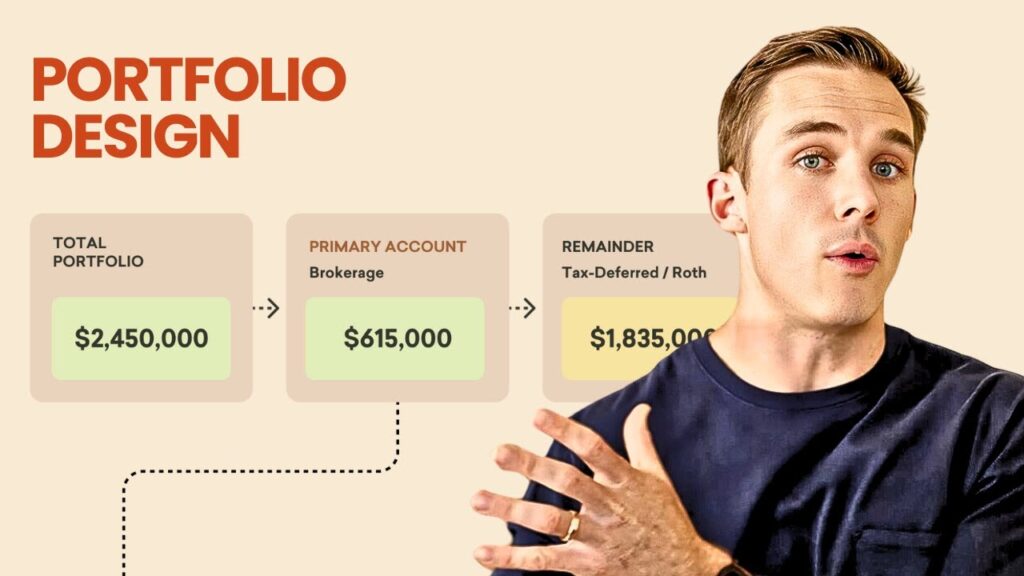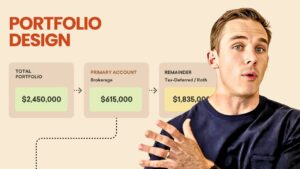Why Set-It-and-Forget-It Doesn’t Work in Retirement

When most people think about retirement, they picture a big final decision: choosing an allocation, maybe hiring a financial advisor, then sitting back and watching it all play out. But let me tell you—that’s a mistake.
A “set-it-and-forget-it” strategy might work while you’re working, but in retirement, it can seriously jeopardize your financial security. That’s why I want to share Eduardo and Ana’s story. They’re a perfect example of why portfolio adjustments don’t stop at retirement—they just begin.
Eduardo, 65, and Ana, 64, had done a lot of things right. They had a combined $2.45 million saved: $825,000 in Eduardo’s 401(k), over $1 million in Ana’s rollover IRA, and $616,000 in a brokerage account. Their house was fully paid off and worth $1.1 million. Sounds like the picture of financial health, right?
But like many retirees, they got hit hard in 2022. Their portfolio dropped by 25% due to a heavy concentration in tech stocks. Suddenly, their retirement timeline was in jeopardy—and they were left scrambling for answers.
Here’s what we did: first, we set aside five years’ worth of spending in stable assets—things like bonds and cash equivalents—to shield against market volatility. With their monthly retirement spending expected to be $6,600 (plus $4,200 annually each for healthcare), we calculated that about $490,000 needed to be easily accessible in the first five years. That became our “conservative bucket.”
From there, we looked at the brokerage account—about $615,000 at the time. We allocated 70% to conservative assets and 30% to stocks for potential growth. This structure gave them peace of mind while still leaving room for their money to grow. Interest and dividends—conservatively projected at $12,000 per year—helped reduce the need to dip into principal too aggressively, adding up to $45,000 over those initial years.
But the real game-changer? Social Security integration. Once they hit 70, their Social Security benefits would kick in and dramatically reduce their need to pull from the portfolio. If their investments grew at just 6% annually, they’d be looking at a $3 million portfolio by that point—meaning they’d only need to withdraw about 3.6% annually between ages 70 and 75. That’s incredibly sustainable.
Now here’s where it gets interesting. Based on their financial security and projected income, Eduardo and Ana actually had the capacity to increase their stock allocation later in retirement—potentially up to 100%. But risk capacity isn’t the same as risk tolerance. Eduardo was fine riding out market swings. Ana? Not so much. So we kept the allocation growth-oriented but within their comfort zone, ensuring they could sleep at night while still protecting against inflation.
The biggest takeaway? We didn’t just manage their investments—we integrated them with their life plan. Their biggest goal was to spend time with their four children and nine grandchildren. They weren’t dreaming of lavish travel or yachts—they just wanted quality time with family and a reliable income stream to support it. So we built the portfolio around that.
Retirement isn’t a finish line. It’s a new phase with shifting variables—healthcare costs, market changes, tax rules, RMDs, and personal priorities. If you don’t adjust your portfolio along the way, you’re risking more than just returns—you’re risking your future.
For Eduardo and Ana, constant review and realignment helped them stay confident even after a major market dip. And for you? If you’re within five years of retirement or already there, this is the time to build a plan that grows with you—not one that’s frozen in time.
You should always consult a financial, tax, or legal professional familiar about your unique circumstances before making any financial decisions. This material is intended for educational purposes only. Nothing in this material constitutes a solicitation for the sale or purchase of any securities. Any mentioned rates of return are historical or hypothetical in nature and are not a guarantee of future returns.
Past performance does not guarantee future performance. Future returns may be lower or higher. Investments involve risk. Investment values will fluctuate with market conditions, and security positions, when sold, may be worth less or more than their original cost.







